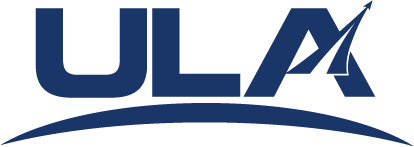News Archive
United Launch Alliance Successfully Launches Second Wideband Global SATCOM Mission for U.S. Air Force in Less Than Three Months
Delta IV WGS-6 Mission Booklet
Cape Canaveral Air Force Station, Fla., (Aug. 7, 2013) – A United Launch Alliance (ULA) Delta IV rocket successfully launched the sixth Wideband Global SATCOM (WGS-6) satellite for the U.S. Air Force at 8:29 p.m. EDT today from Space Launch Complex-37. This is ULA’s seventh launch in 2013, the 73rd launch since the company was formed in December 2006, and the second WGS mission launch this year.
"Congratulations to the entire team on today’s successful launch of the WGS-6 satellite. As with the previous five WGS missions, we have enjoyed a very strong partnership with the Air Force and all of our missions partners throughout this launch campaign,” said Jim Sponnick, ULA vice president, Atlas and Delta Programs. “We were honored to launch the first two WGS satellites on our Atlas V vehicle and the next four satellites in the constellation on our Delta IV vehicle, delivering critical communications capability to orbit to support our nation’s warfighters throughout the world.”
This mission was launched aboard a Delta IV Medium-plus configuration vehicle using a single ULA common booster core powered by an Aerojet Rocketdyne RS-68 main engine, along with four ATK GEM 60 solid rocket motors. The five-meter diameter upper stage was powered by an Aerojet Rocketdyne RL10B-2 engine with the satellite encapsulated in a five-meter diameter composite payload fairing. The WGS-6 launch marked the fourth flight of the Delta IV medium+ (5,4) configuration and the 23rd flight of the Delta IV family of launch vehicles.
“WGS was the first of the constellation of satellites to launch on both the Delta IV and Atlas V vehicles,” said Sponnick. “This team’s ability to integrate and launch satellites successfully and efficiently on two launch systems provides operational flexibility to our customers.”
Wideband Global SATCOM provides anytime, anywhere communication for the warfighter through broadcast, multicast, and point to point connections. WGS is the only military satellite communications system that can support simultaneous X and Ka band communications.
ULA's next launch is the Delta IV Heavy NROL-65 mission for the National Reconnaissance Office scheduled on Aug. 28, from Space Launch Complex-6 at Vandenberg Air Force Base, Calif.
The EELV program was established by the United States Air Force to provide assured access to space for Department of Defense and other government payloads. The commercially developed EELV Program supports the full range of government mission requirements, while delivering on schedule and providing significant cost savings over the heritage launch systems.
ULA program management, engineering, test, and mission support functions are headquartered in Denver, Colo. Manufacturing, assembly and integration operations are located at Decatur, Ala., and Harlingen, Texas. Launch operations are located at Cape Canaveral AFS, Fla., and Vandenberg AFB, Calif.
For more information on ULA, visit the ULA Web site at www.ulalaunch.com, or call the ULA Launch Hotline at 1-877-ULA-4321 (852-4321). Join the conversation at www.facebook.com/ulalaunch and twitter.com/ulalaunch.
United Launch Alliance Successfully Launches Second Wideband Global SATCOM Mission for U.S. Air Force in Less Than Three Months
Delta IV WGS-6 Mission Booklet
Cape Canaveral Air Force Station, Fla., (Aug. 7, 2013) – A United Launch Alliance (ULA) Delta IV rocket successfully launched the sixth Wideband Global SATCOM (WGS-6) satellite for the U.S. Air Force at 8:29 p.m. EDT today from Space Launch Complex-37. This is ULA’s seventh launch in 2013, the 73rd launch since the company was formed in December 2006, and the second WGS mission launch this year.
"Congratulations to the entire team on today’s successful launch of the WGS-6 satellite. As with the previous five WGS missions, we have enjoyed a very strong partnership with the Air Force and all of our missions partners throughout this launch campaign,” said Jim Sponnick, ULA vice president, Atlas and Delta Programs. “We were honored to launch the first two WGS satellites on our Atlas V vehicle and the next four satellites in the constellation on our Delta IV vehicle, delivering critical communications capability to orbit to support our nation’s warfighters throughout the world.”
This mission was launched aboard a Delta IV Medium-plus configuration vehicle using a single ULA common booster core powered by an Aerojet Rocketdyne RS-68 main engine, along with four ATK GEM 60 solid rocket motors. The five-meter diameter upper stage was powered by an Aerojet Rocketdyne RL10B-2 engine with the satellite encapsulated in a five-meter diameter composite payload fairing. The WGS-6 launch marked the fourth flight of the Delta IV medium+ (5,4) configuration and the 23rd flight of the Delta IV family of launch vehicles.
“WGS was the first of the constellation of satellites to launch on both the Delta IV and Atlas V vehicles,” said Sponnick. “This team’s ability to integrate and launch satellites successfully and efficiently on two launch systems provides operational flexibility to our customers.”
Wideband Global SATCOM provides anytime, anywhere communication for the warfighter through broadcast, multicast, and point to point connections. WGS is the only military satellite communications system that can support simultaneous X and Ka band communications.
ULA's next launch is the Delta IV Heavy NROL-65 mission for the National Reconnaissance Office scheduled on Aug. 28, from Space Launch Complex-6 at Vandenberg Air Force Base, Calif.
The EELV program was established by the United States Air Force to provide assured access to space for Department of Defense and other government payloads. The commercially developed EELV Program supports the full range of government mission requirements, while delivering on schedule and providing significant cost savings over the heritage launch systems.
ULA program management, engineering, test, and mission support functions are headquartered in Denver, Colo. Manufacturing, assembly and integration operations are located at Decatur, Ala., and Harlingen, Texas. Launch operations are located at Cape Canaveral AFS, Fla., and Vandenberg AFB, Calif.
For more information on ULA, visit the ULA Web site at www.ulalaunch.com, or call the ULA Launch Hotline at 1-877-ULA-4321 (852-4321). Join the conversation at www.facebook.com/ulalaunch and twitter.com/ulalaunch.


